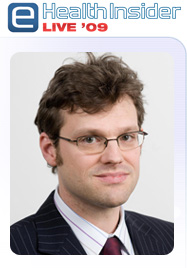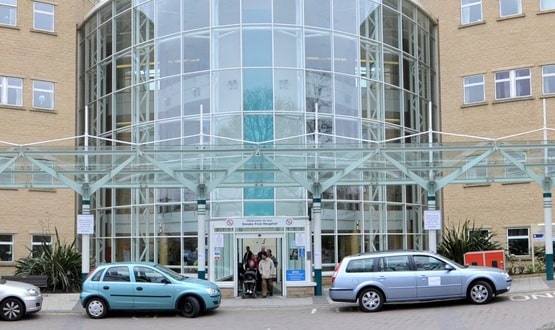Quality street
- 19 October 2009
 |
|
Richard Hamblin |
Richard Hamblin, director of intelligence at the Care Quality Commission, talks to Lyn Whitfield about the lessons to be learned from Mid Staffordshire NHS Foundation Trust and how the CQC plans to use data to safeguard patient care in the future.
Back in March, the Healthcare Commission published a report on Mid Staffordshire NHS Foundation Trust that exposed its high death rates and shocking standards of care.
The report concluded that between 2005 and 2008 the trust suffered between 400 and 1,200 “excess deaths”, mainly among patients admitted through A&E.
It also recounted evidence of patients being left unattended on some wards, in pain and without medication, food and water. The detail of patients drinking from flower vases stuck in the mind.
Yet there were plenty of signs that things were wrong for those willing and able to read them. Dr Foster Intelligence and the Healthcare Commission’s mortality outlier programme picked up causes for concern. The trust’s response was that it had a coding problem.
“By Autumn 2007, we knew there was something that we needed to understand,” says Richard Hamblin, head of intelligence at the Healthcare Commission’s successor, the Care Quality Commission.
“But that foundered with an organisation that did not want to know anything except that it had a problem with data quality. Then, in March 2008, an investigation started and it immediately became clear that there were things to sort out. But it took a year to complete the investigation.”
We have a problem
Hamblin will be speaking at E-Health Insider Live ’09 about using information to improve public safety. Mid Staffordshire is an essential piece of background, not only because of the shock and outrage it caused but because data collection, coding, analysis and reporting problems helped to distract attention from what was going on.
The Healthcare Commission’s report found that most of the trust’s coders were working part time, with little or no support from clinicians. A new data collection system also suffered “teething problems.”
When Dr Foster and the Healthcare Commission’s high mortality outlier programme triggered alerts, the trust’s initial response was to point to these issues as the cause.
“One argument was about whether cases were being coded as less serious than they should have been, because if they had been more serious the deaths might have been expected,” Hamblin says.
Even so, he points out that the problems should have been a worry in themselves. “In closed cases [into investigations at other trusts] data quality is, in itself, an issue because otherwise you do not know what you are doing,” he says.
Mid Staffordshire didn’t have the right mindset to recognise this. The Healthcare Commission’s report notes that its board was “overly focused” on its financial position and the targets it needed to hit to become a foundation trust.
Culture flaws
Hamblin believes that attitudes are changing. “We are now seeing people moving much more quickly [when alerts are triggered],” he says. “In fact, I am impressed with the response we get. Good people are giving us good answers.”
He also points out that the health service has come a long way in the decade since the Commission for Health Improvement was set up in response to the Bristol Royal Infirmary Inquiry into the deaths of babies undergoing heart operations.
“When we started with this in 2001, CHI did some very basic stuff with some very simple measures, and medical directors’ jaws dropped,” says Hamblin, who worked for CHI when it was formed and has stayed with the organisation through the two reorganisations that turned it into the CQC.
“Now people are coming up with imaginative ways to interpret data and good case reviews are being done.” At the same time, he says, people are more aware of the potential pitfalls of poor data analysis; and of the growing body of evidence on how to get it right.
“This is not just a technology thing,” he says. “There has been such an emphasis on some of the things around NHS Connecting for Health that people have given a lower priority to actually using information.
“Yes, you need IT to do this. But you also need the medical director to champion it and the clinicians to sit down with the analysts to make sure that the right analysis is done and for people to actively look at the results. It has to be part of the culture.”
Building quality and risk profiles
Of course, there are other sources of information available to the NHS. Mid Staffordshire received a large number of complaints from patients – yet the board either did not know about them or saw them “grouped into and effectively lost in categories such as ‘communication’ or ‘quality of care’.”
More recently, feedback sites have been developed that not only collect information from the public and patients but display it back to them. Hamblin, who used a Harkness fellowship to study how Seattle patients with long-term conditions made use of information, says the CQC is well aware of these developments.
“Using this information is something the CQC is really going to be pushing,” he says. “Increasingly, we are going to be bringing together everything that we know about an organisation in one place and analysing it within a common framework.
“We are developing quality and risk profiles for every organisation we register. We will build up them up, over the next two and a half to three years. The Healthcare Commission’s screening system moved some way towards that. The CQC’s registration requirements will let us develop it further.”
Hamblin says the CQC will also look to be as “open” as possible, without being “reckless” with the reputation of the organisations it is regulating, and without going outside its regulatory remit. “We are not an alternative to NHS Choices,” he says.
Keeping the focus on quality
All organisations providing health and social care must register with the CQC by next spring. When it issued the annual ‘health check’ developed by the Healthcare Commission earlier this month, the CQC warned that a lot of NHS trusts had a lot of work to do if they were going to be ready in time.
Worryingly, the acute sector did less well in the latest health check than in its predecessor. Fewer trusts were rated “excellent” and more “fair”, while the percentage complying with all the supposedly mandatory standards fell from 69% to just 59%.
This does not bode well for the future, when the NHS will be under more financial pressure. There is real concern from think-tanks and senior managers that the health service could respond by cutting staff, cleaning and other standards and letting waiting lists lengthen.
Hamblin says this must not happen. “I think there is a false dichotomy between quality and expenditure,” he says. “The right response has to be to improve quality because improving quality means cutting waste. We need to keep putting patients at the heart of care, because that means getting it right for them first time.”
|
Richard Hamblin will be speaking at E-Health Insider Live ’09 on 9 November, and taking part in a panel discussion on benefits realisation. E-Health Insider Live ’09 is the essential, two day exhibition and conference at The ICC in Birmingham. ore than 60 exhibitors are booked for the exhibition, which also features a free best practice showcase. The exciting conference programme, whose principal sponsor is BT, has four streams exploring “the big picture” on healthcare IM&T, benefits realisation, digital patient care and healthcare interoperability. And there’s no need to be stuck in your hotel overnight, because E-Health Insider has organised a great comedy night at Jongleurs, which should be a fantastic entertainment and networking opportunity. Register now. |




